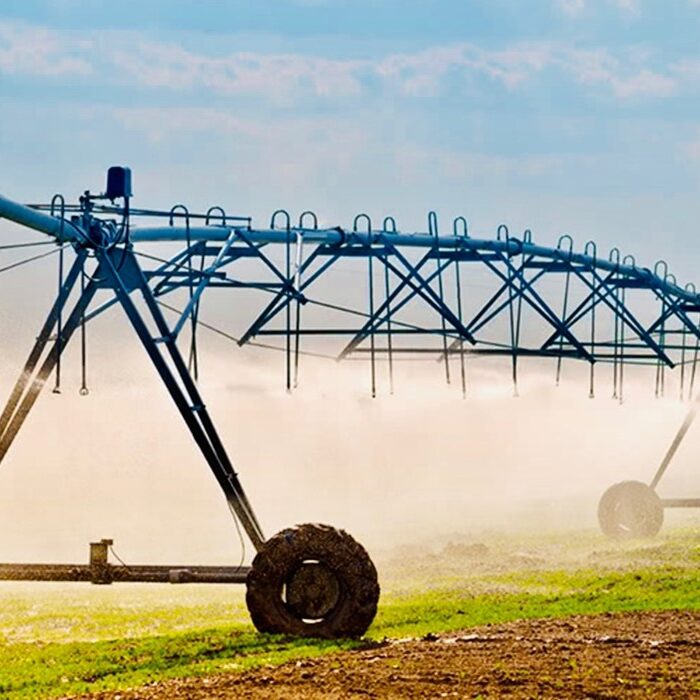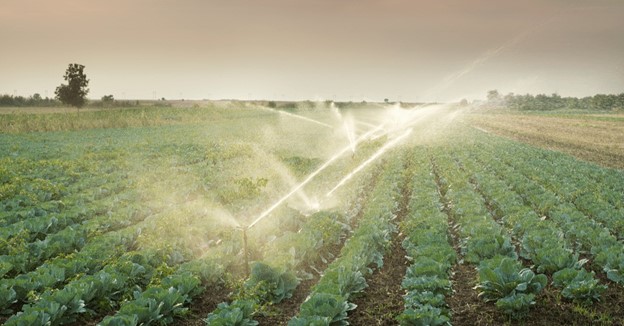Using Solar
for Irrigation Systems
The University of Wisconsin conducted a study with 497,000 acres and 2,400 farms, and their main findings were the following:
- 97% of irrigation systems use sprinklers, and 86% of them use center pivot systems.
- The typical installed cost of a center pivot system is $1,000 per acre.
- 31% of systems use high pressure, 54% use medium pressure, and 15% use low pressure.
- 73% of irrigation pumps use electric motors, 24% use diesel engines, 2.6% use gasoline engines, and less than 1% are driven by natural gas or LP engines.
There is an excellent opportunity to save energy by reducing the operating pressure of center pivot systems. Generally, this can be accomplished with newer sprinkler technologies. A change from high pressure (>60 psi) to medium pressure (50-60 psi) can achieve energy savings of 15-20%, while a reduction to low pressure (30 psi) saves around 30%.


The University of Nebraska-Lincoln has developed two calculators to estimate irrigation costs, based on site conditions and system features – IrrigatePump is used to estimate upgrade costs and payback periods, while IrrigateCost can calculate ownership and operation costs.
Solar powered irrigation systems: Once thought impractical due to the fixed array configurations of large tracks of land needed to provide sufficient power Solartron’s new state of art dual axis elevated trackers can be installed providing 10Kw to more than 100Kw to operate irrigation systems. Depending on Hp required many of Solartrons systems can be installed on moveable mounts providing ability to move between fields as needed.
